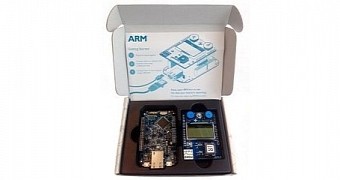The Internet of Things has been causing quite a buzz in the technology industry, but has still not actually come close to being a real thing. It has made the first steps, but an actual platform dedicated to it doesn't exist.
Or rather didn't exist until now. IBM and ARM have teamed up to create something they have simply dubbed the IoT Starter Kit – Ethernet.
This is the first ever Internet of Thing Starter Kit and uses the Freescale K64F platform, which features a Cortex-A4 processor clocked at 120 MHz.
The processor is backed by 256 KB of RAM and has 1 MB of flash on which to store a rudimentary OS. Those resources should be enough for the purposes of a connected home.
The idea behind Internet of Things
IoT is a society and living model in which every single appliance in a home is linked to the others through a server or cloud service.
Moreover, there are thoughts of adding some electronic capabilities, like status screens and weather indicators maybe, to non-technological furniture as well.
You could start your day in front of the TV but receive an e-mail alert or door ring pop-up on the screen, which would prompt you to go to the computer or front door to see what the interruption is all about.
You could also monitor the roast cooking in the kitchen over from your computer, TV or even the back yard if you have a speaker or alarm of some sort nearby.
For this, every device involved needs a modicum of processing power without actually requiring all that much energy to work with.
The new IoT Starter kit from IBM and ARM should fulfill this role quite nicely, especially since Ethernet control is included.
The deal also means that adopters could rely on IBM's BlueMix cloud server platform in order to centralize and process everything if they lack a dedicated server of their own. At least until they remedy that problem.
The main goal
Between the ARM mbed project and the IBM BlueMix cloud platform, the two companies hope to make it easy for device makers to create new prototypes, since the mbed OS basically covers the main software bases as well.
After that, it will be up to users to see if Internet of Things sees mass adoption or if it's put on the sidelines until later.

 14 DAY TRIAL //
14 DAY TRIAL //